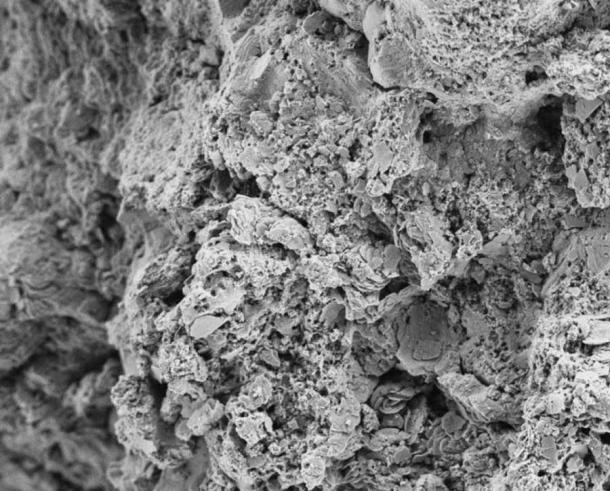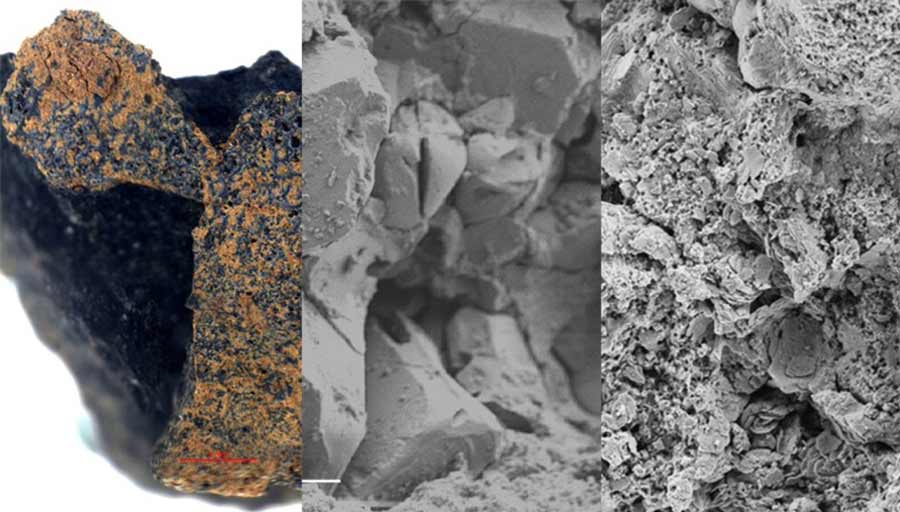Can 4.6 Billion-Year-Old Meteorite Hold Secrets of Life on Earth?
The 4.6 billion-year-old meteorite crashed to Earth in March having travelled through space and time from the very birth of our solar system. The charcoal-black alien rock travelled more than 110 million miles (177 million km) from the main asteroid belt between Mars and Jupiter before its cosmic journey ended in a Woodmancote sheep field in Gloucestershire, England.
Chemist Derek Robson, director of astrochemistry at the East Anglian Astrophysical Research Organization (EAARO), found a two-inch (5 cm) wide fragment of the priceless charcoal-black object on the second day of a ground search near the village of Woodmancote back in March. Now, a report by a team of scientists at Loughborough University says the ancient meteorite is likely a “remnant of cosmic debris” left over from the birth of the solar system.

Derek Robson found the 4.6 billion-year-old Woodmancote meteorite in March 2021. (Loughborough University)
Seldom Does a Councilor Approve a Meteorite “Space Rock Hunt”
An article in Daily Mail explains that special permission was granted from Tewkesbury Council to search the area back in March 2021 after the meteorite was seen blazing in the night skies just before 10pm on February 28. What is described as an “incredibly delicate sample” was found lying in the imprint of a horseshoe. Robson thinks it's likely a fragment of the same meteorite that left another 10.5 ounce (300 g) chunk on the driveway of a home in Winchcombe, also in Gloucestershire, earlier in the year.
- Anomalous Metallic Object Discovered Inside a 4.5 Billion-Year-Old Meteorite
- Farmer Discovers He’s Been Using a Meteorite As a Doorstop…And It’s Worth $100,000
Now known as the Winchcombe meteorite, due to the larger piece that landed on a driveway in Winchcombe, astronomers now know that it broke from a larger object that is estimated to have measured more than a foot (30 cm) across, weighing as much as 130 pounds (59 kg). A Daily Mail article published earlier this month said that when the meteor hit the Earth's atmosphere at 21:54 on February 28 it plunged into Earth's orbit “at around 31,000 mph - 40 times the speed of sound,” before it burned up and shattered into smaller pieces.

Secondary electron image of carbonaceous chondrite meteorite at 10,000x magnification. (Loughborough University)
A Rare Rock Loaded with Priceless Microscopic Meteorite Secrets
The fragment found in Woodmancote was donated to the Natural History Museum in London and has since been valued a t £100,000 ($135,000). However, when it comes to scientific value the space rock is priceless. The researchers think this particular meteorite travelled more than “110 million miles” (177 million km) from its “primordial home” in the main asteroid belt between the orbits of Mars and Jupiter. Furthermore, the Loughborough University article explains that this space rock might “answer questions about how life began on Earth.”
Chemist Derek Robson, the man who found the meteorite, has since determined that the ancient rock is a rare example of a “carbonaceous chondrite” or “C chondrites.” Britannica inform that this class of chondritic meteorites comprise at least 8 known groups including some of the oldest known meteorites. The C chondrites represent only “around 3% of meteorite falls,” hence they are so rare and valuable, since they often contain biological compounds, including amino acids.

Secondary electron image of mineral chondrule in the carbonaceous chondrite meteorite. (Loughborough University)
This New Acid Is Really Spacey
Amino acids gathered from previously studied meteorites have demonstrated that many non-terrestrial organic compounds “could” have been delivered to Earth by early solar system bodies. It is these acids that may have played “a key role in life's origin,” says Robson. Furthermore, he told the Daily Mail that being able to identify and confirm the presence of such compounds from a material that existed “before the Earth was born,” would represent an important next step towards our greater understanding of “how life began.”
- Space Rock Sold! 4.5-Billion-Year-Old Meteorite is the Oldest Item Ever Sold on Earth
- The Wold Newton Meteorite: An Extraordinary Stone and the Birth of a Superhero
Thirsty for answers to the big questions, the team of scientists based at Loughborough University are analyzing the small fragment from Woodmancote using vibrational spectroscopy, X-ray diffraction and electron microscopy. They have already published a set of mesmerizing new 3D images showing the rock in high definition which were taken on their hunt to chart the rare rock’s chemical structure and geometric composition.
So far it is understood that the meteorite never underwent “the violent cosmic collisions that most ancient space debris experienced as it smashed together to create the planets and moons of our solar system.” This means the rock had been “sitting out there past Mars, untouched, since before any of the planets were created.” With such early cosmic origins, researchers are excited that this discovery is a rare opportunity to examine “a piece of our primordial past.”
Top image: Analysis of the Woodmancote meteorite was conducted using a range of technology. Source: Loughborough University
By Ashley Cowie




















Comments
4.6 billion-year-old Woodmancote meteorite ?? Billion? *team of scientists at Loughborough University says the ancient meteorite is likely a “remnant of cosmic debris” left over from the birth of the solar system. Key work likely.. definitely not conclusive. I don’t see how any scientists can possibly tell or explain the date of something that fell from space.
-KLM